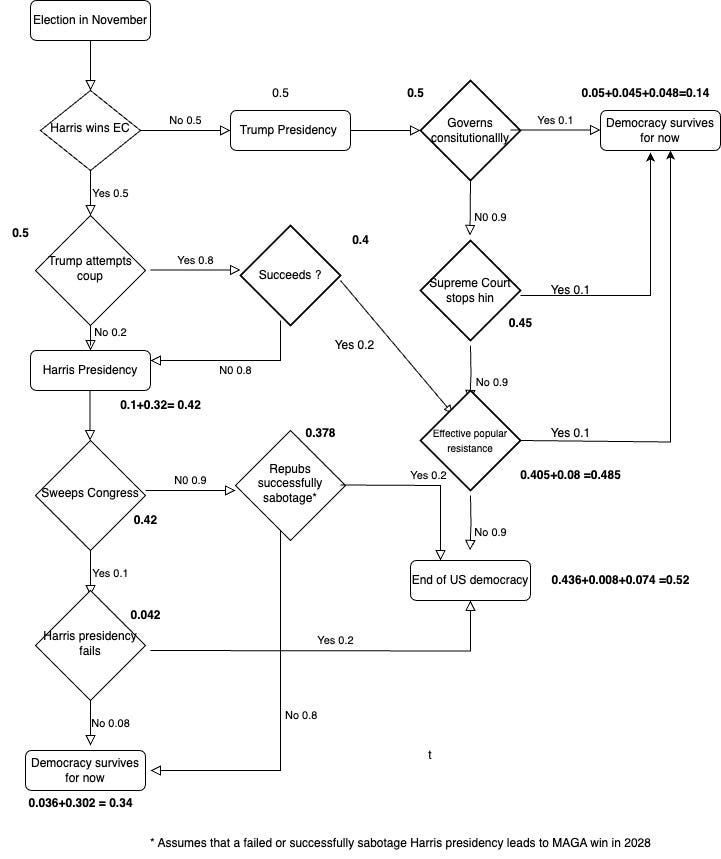I spend a lot of time these days thinking about what I, and Australia as a nation, should do if the US ceases to be a democracy. But, it doesn’t seem as if lots of other people are thinking this way. One possibility is that people just don’t want to think about it. Another, though, is that I’ve overestimated the probability of this outcome. To check on this, I set up a flowchart using a free online program called drawio. Here;s what I came up with I hope it’s self-explanatory. The bold numbers next to the boxes are the probability of reaching that box. The numbers next to arrows coming out of decision nodes (diamonds) are the probability of that decision. I also apologize in advance if there are any arithmetic errors – my degree in pure mathematics doesn’t insulate me
Topics:
John Quiggin considers the following as important: Uncategorized
This could be interesting, too:
tom writes The Ukraine war and Europe’s deepening march of folly
Stavros Mavroudeas writes CfP of Marxist Macroeconomic Modelling workgroup – 18th WAPE Forum, Istanbul August 6-8, 2025
Lars Pålsson Syll writes The pretence-of-knowledge syndrome
Dean Baker writes Crypto and Donald Trump’s strategic baseball card reserve
I spend a lot of time these days thinking about what I, and Australia as a nation, should do if the US ceases to be a democracy. But, it doesn’t seem as if lots of other people are thinking this way. One possibility is that people just don’t want to think about it. Another, though, is that I’ve overestimated the probability of this outcome.
To check on this, I set up a flowchart using a free online program called drawio. Here;s what I came up with

I hope it’s self-explanatory. The bold numbers next to the boxes are the probability of reaching that box. The numbers next to arrows coming out of decision nodes (diamonds) are the probability of that decision.
I also apologize in advance if there are any arithmetic errors – my degree in pure mathematics doesn’t insulate me against them.
If the US were remotely normal, every entry on the left-hand edge ought to be equal to 1. Harris should be a sure winner, Trump shouldn’t find any supporters for a coup, the MAGA Republicans in Congress should be unelectable and the moderate program proposed by Harris should be successful enough that Trumpism would be defeated forever.
But that’s not the case. There are two end points in which US democracy survives, with a total probability (excessively precise) of 0.46, and one where it ends, with a probability of 0.54. By replacing my probabilities at the decision nodes with your own, you can come up with your own numbers. Or you may feel that I’ve missed crucial pathways. I’d be interested in comments on either line.
Note: Any Thälmann-style comments (such as “After Trump, us” or “Dems are social fascists anyway”) will be blocked and deleted.
